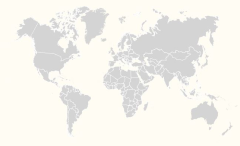Mariano Ospina Pérez was a Colombian politician and the Conservative President to serve as the 17th Head of the country during the turbulent years 1946-1950.
Background
Mariano Ospina Pérez was born on 24 November 1891 in Madellin into a politically prominent Antioquia family. His grandfather, Mariano Ospina Rodriguez, was president of Colombia from 1857 to 1861, and an uncle, Pedro Nel Ospina, was president from 1922 to 1926.
Education
Educated in private schools in Medellin, Ospina studied business and engineering at universities in Medellin, the United States, and Belgium. Subsequently, he was active for years in managing the family’s vast commercial holdings.
Career
For a time he directed the Federación Nacional de Cafeteros de Colombia.
Ospina entered politics at an early age. He served in city and departmental offices, and then was elected a senator from Antioquia in 1923. In 1926 he was minister of public works.
When the rightist party leader, Laureano Gómez, looked for a candidate to oppose the divided Liberals in the election of 1946, he settled on Ospina, who won because of the Liberal split, although the Liberals retained majorities in Congress.
When the Liberals confirmed their majority in the 1947 congressional elections, and popular Jorge Eliecer Gaitán won control of the Liberal Party, the Ospina administration appeared paralyzed. This seemed to be confirmed by increasing rural violence between Liberals and Conservatives in which tens of thousands lost their lives, and by the president’s apparent inability to control it.
Following the assassination of Gaitán on April 9, 1948 and the uprising known as the Bogotázo. Ospina brought Liberals into his administration. But the contradictions of a Conservative president representing a minority of the voters and a Liberal Congress representing a majority, as well as the antagonisms between reactionary Conservatives and reformist Liberals, led Ospina to close Congress and declare a state of siege in 1949. His action paved the way for the election of Gómez in 1950, when the Liberals abstained from voting.
Following the formation of the National Front governments in the late 1950s, Ospina assumed the role of an elder statesman of the Conservative Party. An important, sometimes majority, faction of the party identified as Ospinistas.
Politics
Ospina earned a reputation for moderation and conciliation. He generally stayed apart from the intense internal strife and tendencies toward extremism that wracked the Conservative Party during the 1930s and early 1940s.




